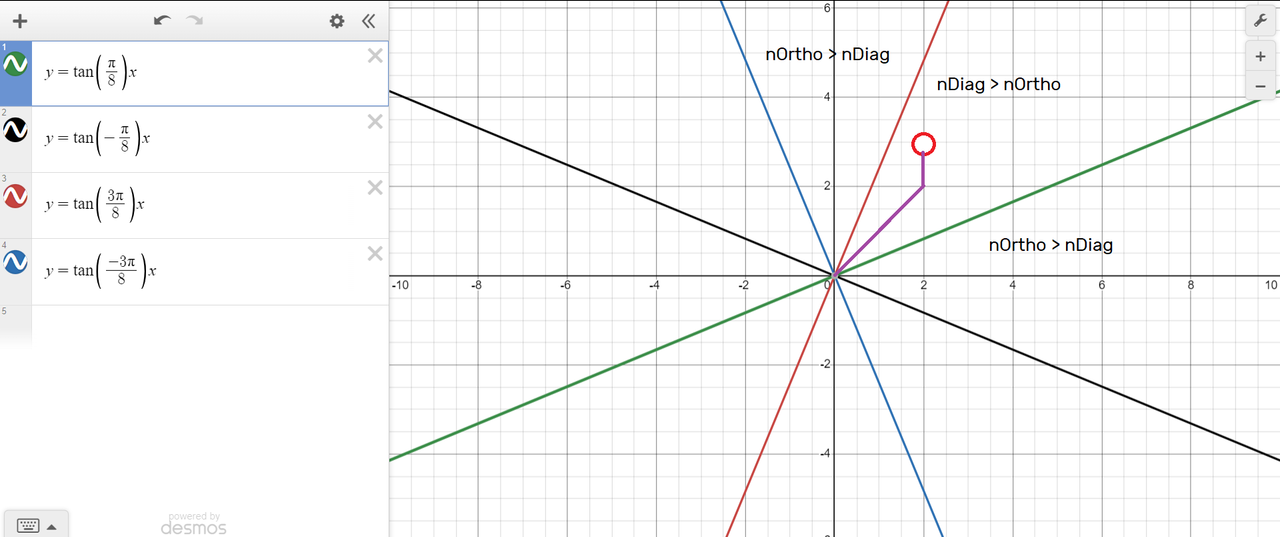The only other thing you may want is a lookup of floor(n/sqrt(2)) where floor(x) is the largest integer less than or equal to x (i.e. INT x). Then you won't need to multiply by 1/sqrt(2) you can just look it up to find the value the axis distance has to be to be nearer than the diagonal.
Table can be very small, doesn't need to be the max extent of the map it's about half that/sqrt(2) I believe.
The code for a multiply function would be larger than the table size I think

Also more accurate since 1/sqrt(2) is irrational of course. n/sqrt(2) is irrational unless n=0 of course. EDIT: So because of that, every integer lattice point which isn't the origin can never be equidistant to a diagonal and an axis, i.e. every point (a, b) with a, b integers except (0, 0) is unambiguously in exactly one of the 8 quadrants.
So that would be
index, floor(index/sqrt(2)), (value before floor taken shown in brackets)

Used the Speccy again lol

I couldn't work out how to tell WolframAlpha to print decimal approximation of 1/sqrt(2) instead of it showing in surd form
 https://www.wolframalpha.com/input?i=ta ... %3D0+to+20
https://www.wolframalpha.com/input?i=ta ... %3D0+to+20
EDIT: I'd still have an option (conditional assembly) to use Chebyshev or Taxicab metric instead of doing something more complicated though.
EDIT2: If you want to store the distance though you still need a multiply by sqrt(2) function obvs

Or you could use your 2 bytes instead to store nOrtho and nDiag and use the table to find out which is shorter. Or you could use a lookup of x -> x/sqrt(2) in some fixed point representation. You won't need the floor table then but it won't be 100% accurate cos of the irrationality of 1/sqrt(2).
Think I'm done for now anyway

I do like a good bit of maths though interesting problem to solve

You're halfway to discovering field extensions which are used to prove that there's no general formula involving nth roots for solving quintic or higher degree equations

You've adjoined sqrt(2) to the rational numbers to make a field extension where members are of the form a + b sqrt(2) where a, b are rational


